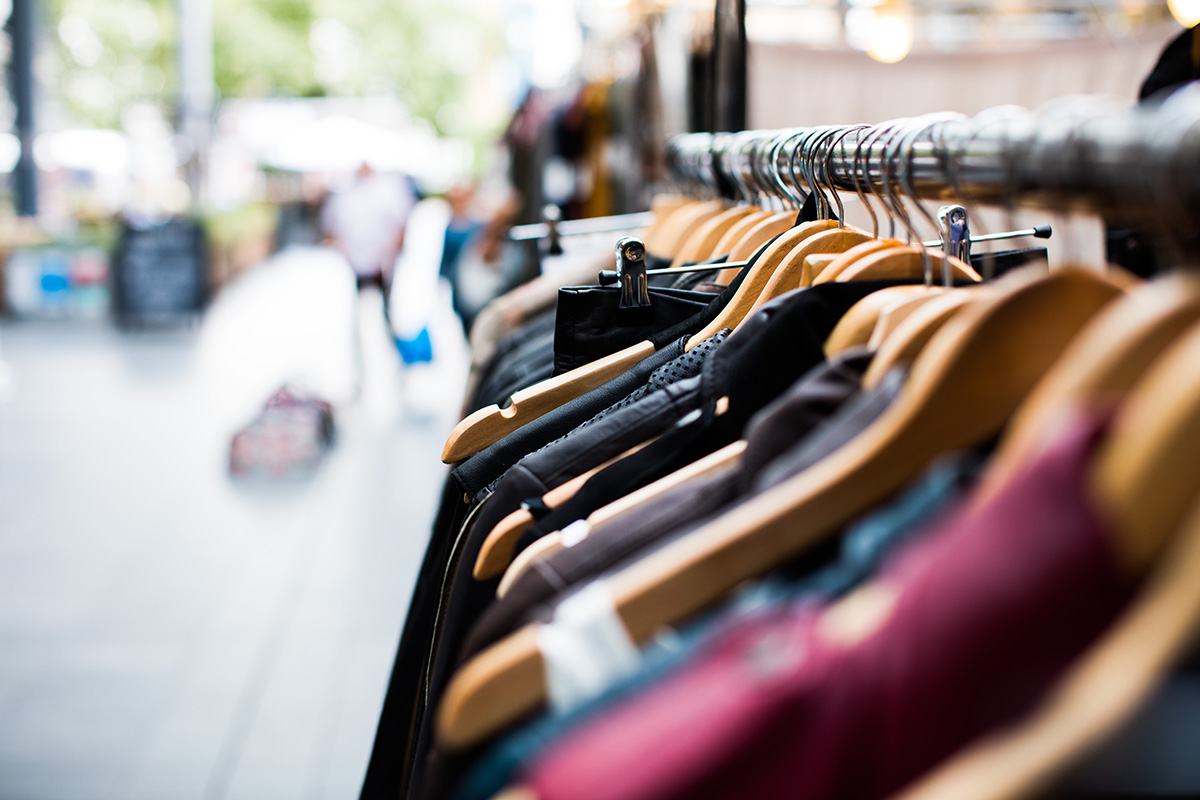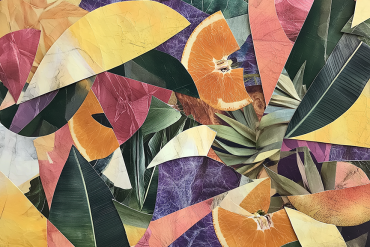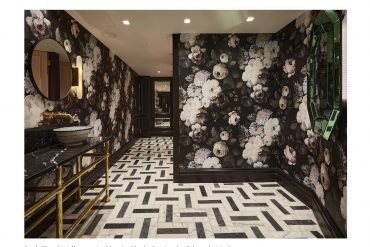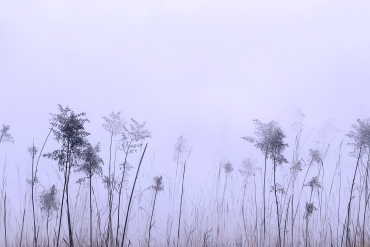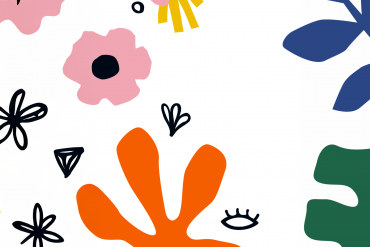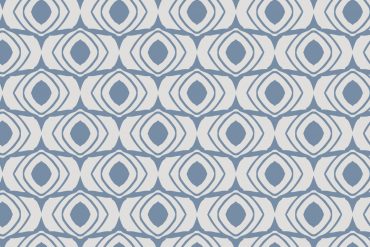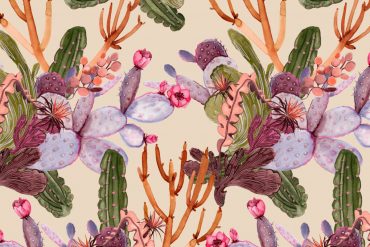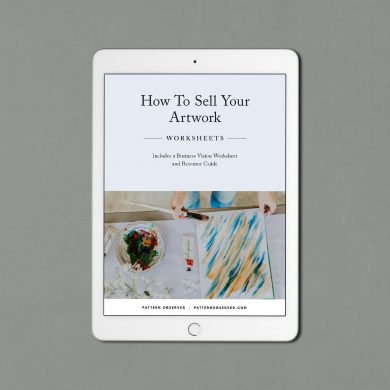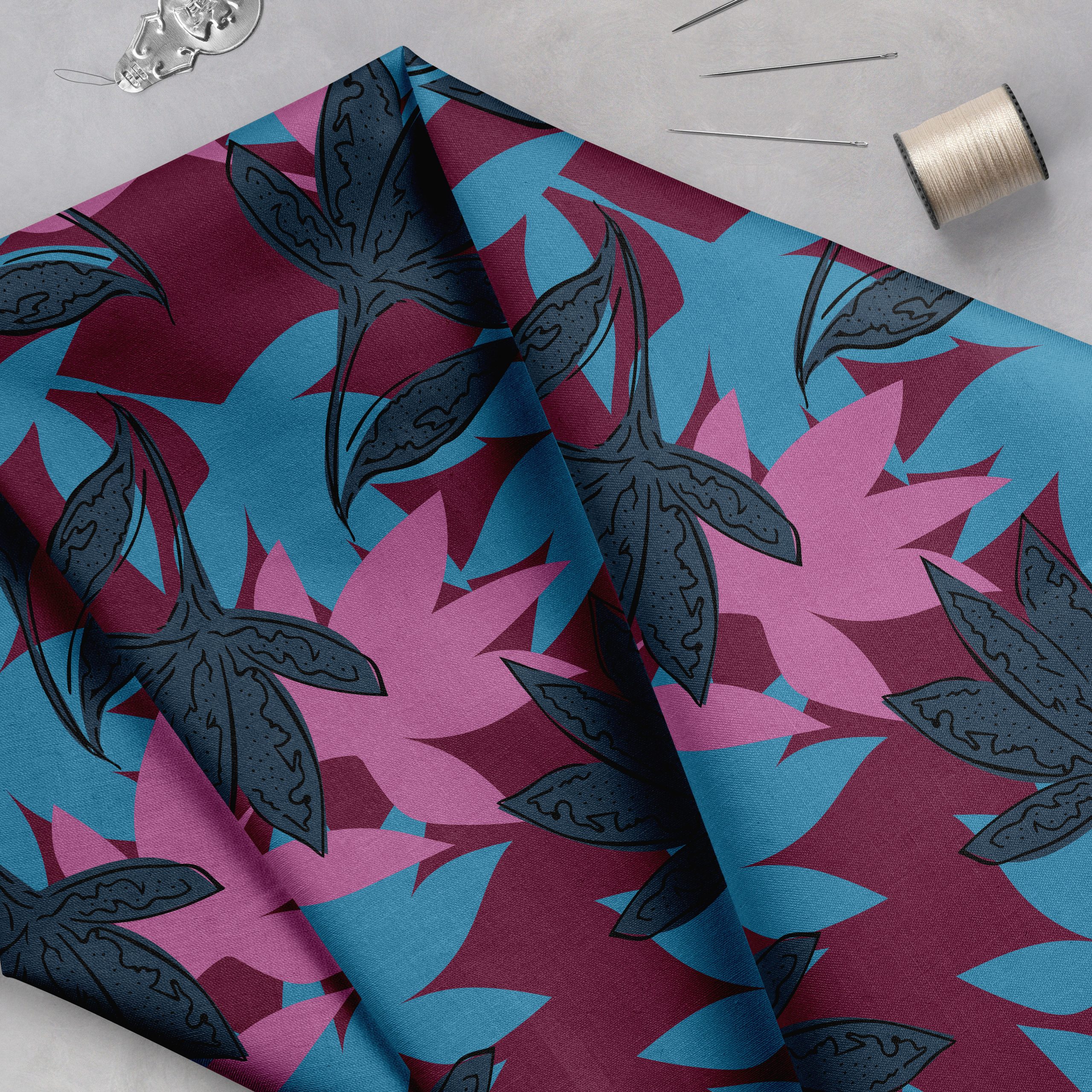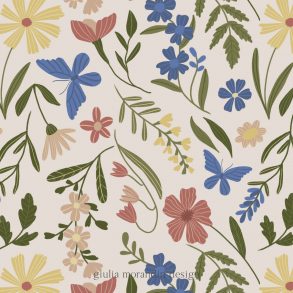Vicki Wallis worked within the apparel industry for 12 years before branching out on her own and creating The Fashion Business Coach (formally named 29andSeptember Studio). Vicki helps designers who are starting a clothing brand succeed in their business. We are so excited to bring her wealth of experience to the Textile Design Lab guest expert role. On Monday, December 9th, Vicki will share:
- The first steps towards starting your business and how you can validate your idea before you’ve spent money on developing products.
- The big mistake that new brands make and how you can avoid it.
- Options for manufacturing your products, including a low cost strategy for those of you on a budget.
- Ways of selling your products and the pros and cons of different methods.
We invite you to learn more about Vicki in today’s interview!
Welcome Vicki! Can you tell us about your career path, and what led you to starting your own business?
Thanks! I started working in the fashion industry about 15 years ago now. I got a degree in fashion design, manufacture and promotion in England (where I’m from) and started working for large retailers, most of which are unknown in the US sadly, however you’ve probably heard of Zara and Boden. Over the years I’ve been lucky to be able to work in a variety of roles, including designer, buyer, pattern maker and garment technologist, to name a few! 3 years ago I decided to take the leap and start my own business and have focused on helping small and startup fashion brands to launch and scale. This was really important to me, as when I started my own fashion business, there was so little information out there for small brands, which meant that as a new business owner I made a lot of mistakes when I was younger that I could have avoided. Plus, by having my own business I’m in a better position to help with making the fashion industry more ethical and sustainable.
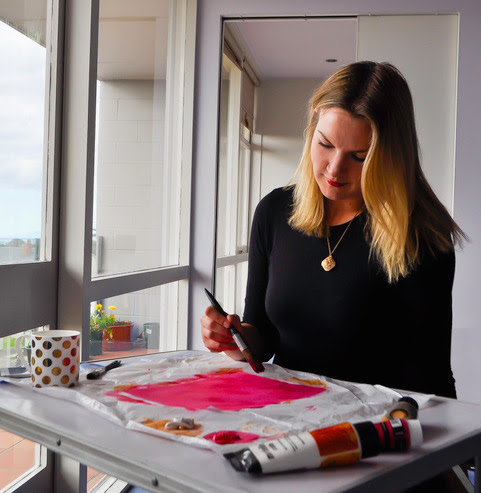
Tell us a bit about the different courses and services you offer–where would you recommend someone get started if they are starting a clothing brand?
For people who are brand new, I’d suggest starting on my blog, as this has a lot of free articles and videos to help with the basics and it gives people an overview of what to expect as a fashion brand owner. For those who want more in depth step by step training on going from idea, to production and product sales, I have both a self-paced online course and 1-on-1 services. The services I offer are tailored to the client and can consist of strategy sessions, designs, done-for-you tech packs (that are used to manufacture products), marketing tips, or a mixture of those.
What are your favorite parts of working with small business owners and helping them to start a clothing brand? What does that process look like?
There’s a lot of reasons why I love working with small brands, first off, it’s amazing to be able to play a part in what can be a life changing experience. Many people I work with are in day jobs they hate and it’s great to be able to help them transition into something they enjoy. It’s also nice to work across lots of areas of the fashion industry. When working for big companies, you normally just work in one small area, for example, you might design a top but have no say in the manufacture and what the end product comes out like. Whereas in a small business, you’re responsible for everything from start to finish and you can have a lot more control over your ideas and seeing them come to life.
In terms of the process, most people come to me with ideas for what they want to create and I assist them in making that a reality. I help clients to make the most out of their ideas, then create technical drawings and tech packs (documents that outline everything the factory need to know in order to quote a price and make the product) so that the customer can move from idea to production. I work collaboratively with clients and help them to iron out potential problems early on, so that we can avoid a lot of the manufacturing and sales problems that a lot of new brands run into.
Can you tell us a bit about the role sustainability plays in your business? What do you feel is important for people to know in this area as they consider launching a new product?
Sustainability is really integral to my business. I got my first book on the subject of sustainability when I was aged 8 and I used to drive my parents crazy with my water saving ideas! Sustainability is also one of the reasons why I wanted to set up my own company. After seeing how damaging the fashion and textile industry is and witnessing the ethically questionable decisions that I’ve seen a lot of CEOs and board members make in big companies, I knew that I had to do something different. As part of the business, I do a lot of work on educating people about sustainability and also working to find alternative materials that brands large and small can use to minimise their negative impact on the environment.
For new brands wanting to work more sustainably, the first thing to know is that you can actually save money using an eco-friendly business model. There’s a lot of rumours that it costs a lot more, but it’s not necessarily the case. Next, it’s important to decide on your brand values. Right now, there’s no official guidelines on what sustainability means exactly, so a great start is to outline what you and your business stand for. It’s important to be clear in what you do and don’t believe in, for instance you might say something like ‘Our brand believes in biodegradable fabrics and packaging – we’re against synthetic fibres and single use plastics that will end up in landfill for decades’. This will help you to make decisions and also to connect with potential customers who have the same views. There’s various ways that you can be more environmentally aware – from the fabrics you choose, to the packaging options, the way you send out mail, running a paperless office, giving back time or money to environmental projects…the list goes on!
Because there’s not any guidelines around sustainability, people need to be really aware of this when starting a clothing brand. Just because something is labelled sustainable, it doesn’t mean that it is, or that it aligns with your values. So it’s best to get specific information about any ‘sustainable’ products, so that you can decide for yourself if it’s suitable for you and your customer. A common example is traditional cotton being labelled as sustainable, when personally I don’t feel it is. Some people consider cotton to be eco-friendly, because it’s natural and biodegradable. But it typically uses a lot of water and harmful chemicals that have a huge detrimental impact on local communities. It’s up to you as a brand to make the call on how you feel about it.

Can you tell us a bit about your approach to trend research and how you tailor trends to suit different brands you are working with?
I like to think of a brand as either trend driven, or trend relevant. Some brands I work with are trend driven, their customers are very trend aware and any design work stems from the trend research that I do. Other brands aren’t so trend focused, but I still think it’s important for them to have a subtle nod to trends (or be ‘trend relevant’, as I refer to it), so rather than focusing designs around trend reports, I’ll just add in some colours or styling details that are trending. My approach to trend research will depend on which category these brands fall into. I really like using trend magazines and forecasting websites for the trend led brands, as well as primary research at exhibitions or by looking at what’s happening in pop culture. For trend relevant, I focus more on consumer trends and shifts in consumer spending habits, plus doing store visits and comp shops. All of the research I do will have the target customer in mind, so I’ll focus in on a particular theme that suits the brand I’m working with and I’ll be keeping an eye on competitors too. I also go to a lot of trade shows, as I like to be mindful of what customer’s will have access to, especially working with small brands as they are often limited to stock fabric and trim options.
What advice have you received in your career that has stayed with you or influenced you? Do you have any words of advice for designers who are just starting out?
Years ago, Belinda (my boss) told me that suppliers aren’t on the same side as designers. I didn’t really understand at first, but now it’s something that I tell new designers who are starting a clothing brand! I always thought that the designer and the supplier had the same goal, that we all wanted to create great quality product. But Belinda pointed out to me that actually, suppliers tend to just want to make a product that’s finished, so they can move on to the next order. Designers and suppliers aren’t on the same side because we don’t have the same end goal. When I changed my approach from working with manufacturers collaboratively, to giving clear and specific instructions to suppliers, I got much better results. Looking back now, I see how many times suppliers gave me bad advice because it was faster or cheaper for them. So my advice to anyone wanting to manufacture clothing would be to make sure you give specific direction to whoever is making your clothes, rather than handing over a vague idea and hoping that the factory have the same vision as you.
Can you give us a quick preview into the presentation you will be sharing with the Textile Design Lab community? What can people expect to learn?
Sure, I’m really excited for this training! I’ll be giving an introduction to starting a clothing brand. It’s suitable for anyone who’s new to the industry and not really sure what needs to happen. I’m going to be sharing the best places to start when building a fashion business, manufacture options and ways to sell your products. I’ll be explaining different methods for manufacturing your designs, one of which is ideal for people with limited time and money. Plus, I’ll be sharing some of the mistakes I made with my own fashion business so that you can avoid them! After the class you can leave with a clear idea of the next steps you can take to go from idea through to manufacture.

